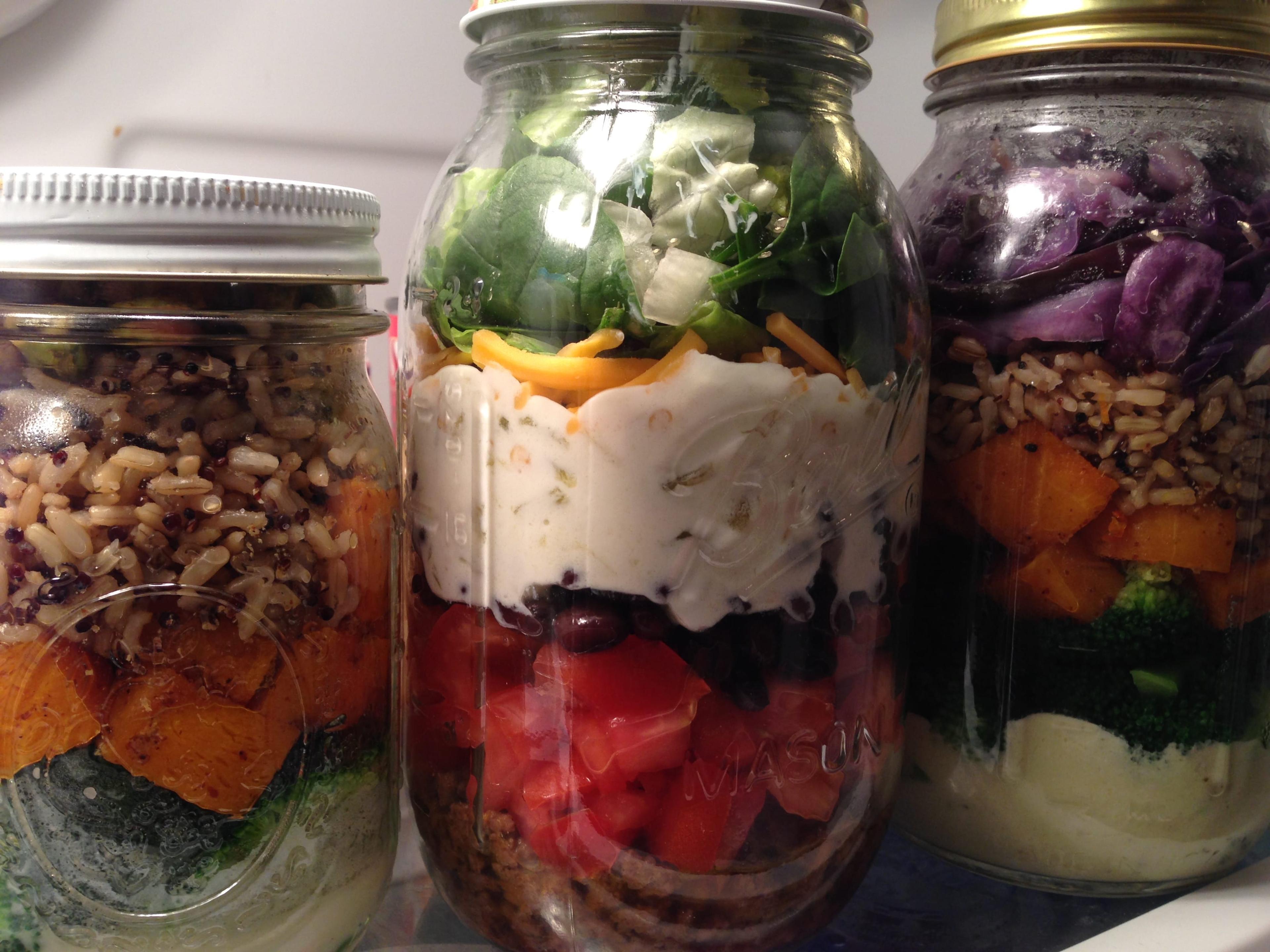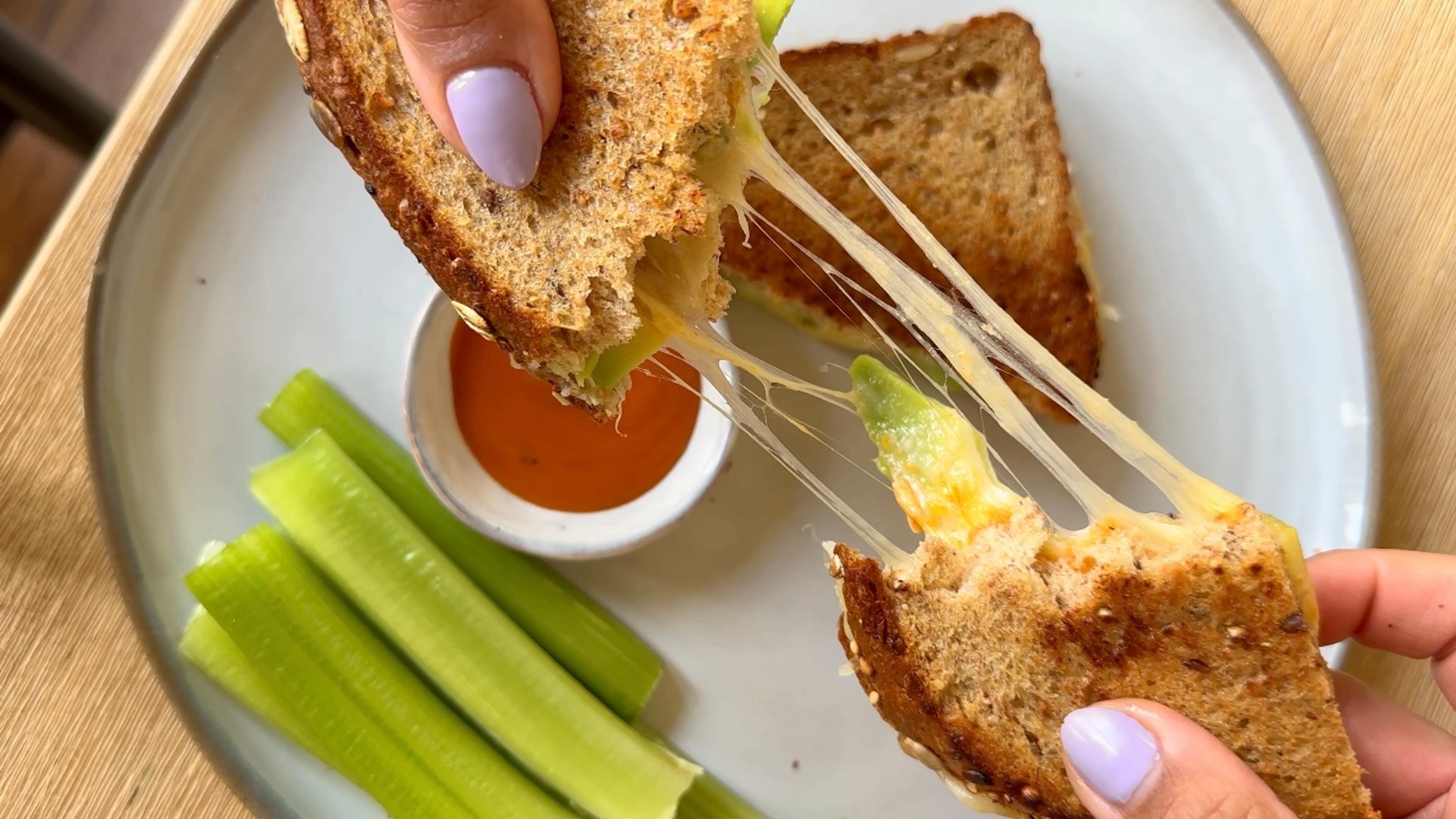Ditch the salad bar for good
| 3 min read

If you’ve gone on Pinterest at all in the past year, you’ve probably seen lots of images of salads in mason jars. This isn’t just a cool way to photograph colorful vegetables, it’s also an awesome concept for packing lunch. The concept is simple: Fill a pint- or quart-sized mason jar (they are widely available at grocery and hardware stores or anywhere canning supplies are sold) with salad ingredients and bring to work. At lunch time, just shake everything out into a bowl and stir with a fork to mix. Seems simple, but there is a very important key to success. You need to layer the ingredients in the right order so the salad doesn’t get soggy before noon.
Here is how to layer your salad components from bottom to top:
- Dressing
- Heavier proteins like beans and meat
- Fruits, vegetables
- Cheese
- Mixed Greens
- Nuts (optional)
Why a jar and not your usual Tupperware? The close quarters keep the layers separate, helping delicate items stay fresh. Salads-in-a-jar will typically last up to five days in the refrigerator, so make a bunch on Sunday for the week. One warning: Salads with cut avocados and bananas won’t hold up as well and should be eaten first.
As with any salad, the possibilities are only limited by your cravings. Here are a few recipes to get you started.
Taco Salad
6 ounces lean ground beef
1 teaspoon taco seasoning
2 tablespoons water
1 cup non-fat Greek yogurt
2 tomatoes, chopped
1 cup canned black beans, drained and rinsed
¼ cup black olives, chopped
½ cup grated cheddar cheese
4 cups romaine lettuce, torn into bite size pieces
In a skillet over medium heat, brown the ground beef and drain excess fat. Add taco seasoning and water to the beef, stirring to mix well. Cook on medium heat for 3 to 5 minutes or until the liquid is absorbed. Set aside to cool.
Take two clean, dry quart-sized mason jars and evenly divide and layer the ingredients in the following order: ground beef, tomatoes, beans, yogurt, cheese and lettuce.
Nutritional Information (Makes 2 servings)
Per serving: 484 calories; 19 total fat; 509mg sodium; 30g carbohydrates; 10g fiber; 45g protein
Rainbow Salad
1 sweet potato, peeled and cut into 1-inch cubes
2 tablespoons olive oil
½ small head red cabbage
Juice from 1 lemon
1 large head broccoli, florets cut into bite-size pieces
½ cup non-fat Greek yogurt
1 tablespoon Dijon mustard
1 tablespoon water
Kosher salt
Freshly ground black pepper
2 cups cooked brown rice medley (such as Seeds of Change’s Quinoa and Brown Rice), prepared according to package directions and cooled
Preheat oven to 350 degrees. Toss the sweet potato cubes with 1 tablespoon of the olive oil and spread out on a foil-lined baking sheet. Roast for 20 to 25 minutes, stirring occasionally until lightly browned. Set aside to cool.
Using a mandolin or a sharp knife, thinly slice the red cabbage. In medium bowl, toss cabbage with half the lemon juice, ½ tablespoon olive oil and a pinch of salt. Set aside.
Meanwhile, in a medium saucepot, bring 6 cups of water to a boil. Add broccoli florets and cook for 3 minutes. Drain and cover with cold water. Set aside.
In a small bowl, combine the yogurt, mustard, remaining lemon juice, water, salt and black pepper.
In two clean, dry mason jars, evenly divide and layer the ingredients in the following order: yogurt dressing, broccoli, sweet potato, brown rice and cabbage.
Nutritional Information (Makes 2 servings)
Per serving: 542 calories;13g total fat; 330mg sodium; 93g carbohydrates; 17g fiber; 24g protein





